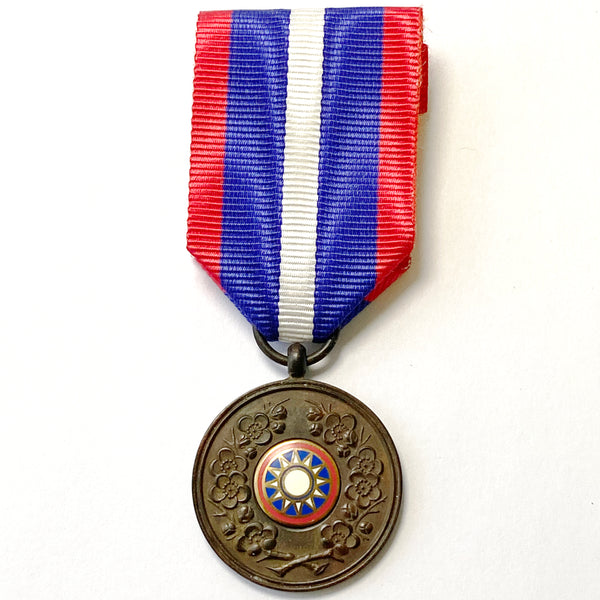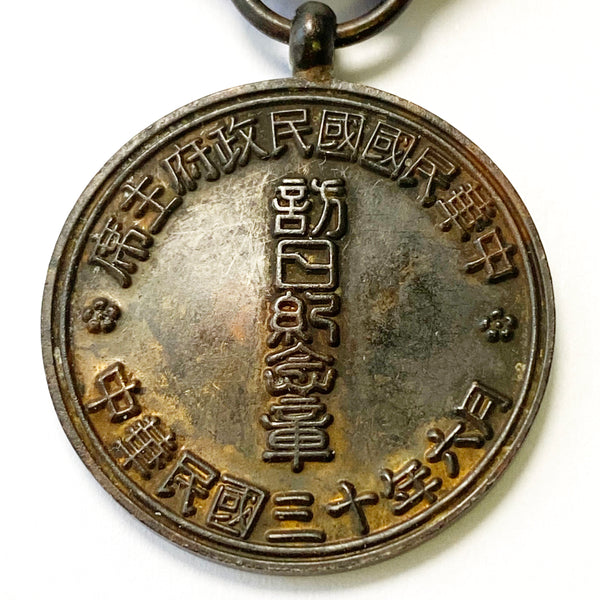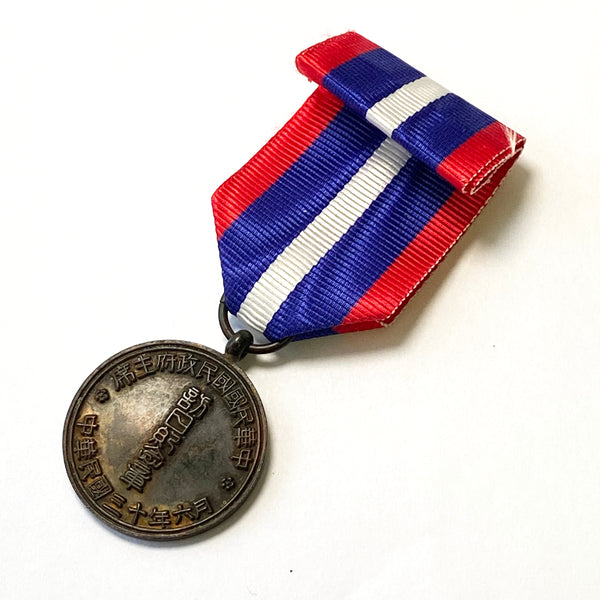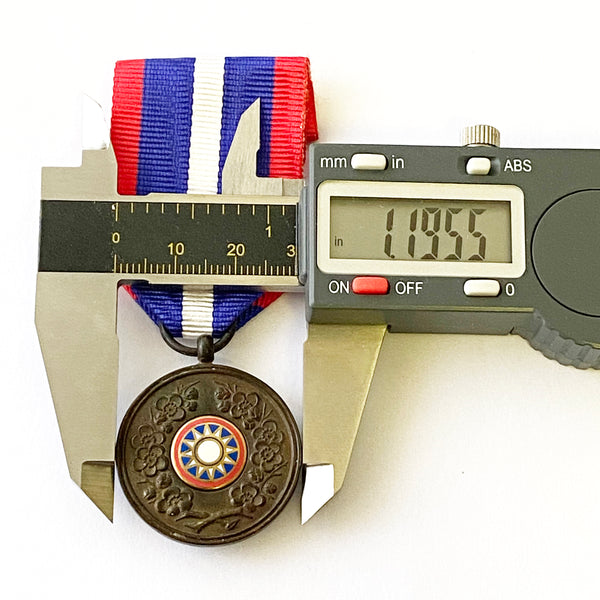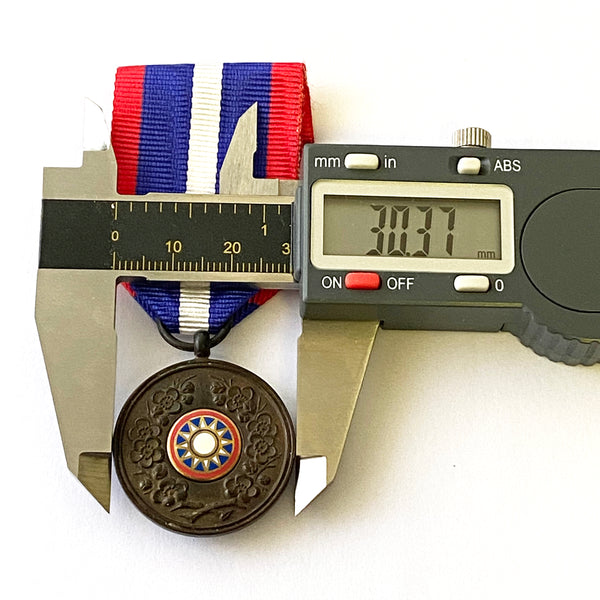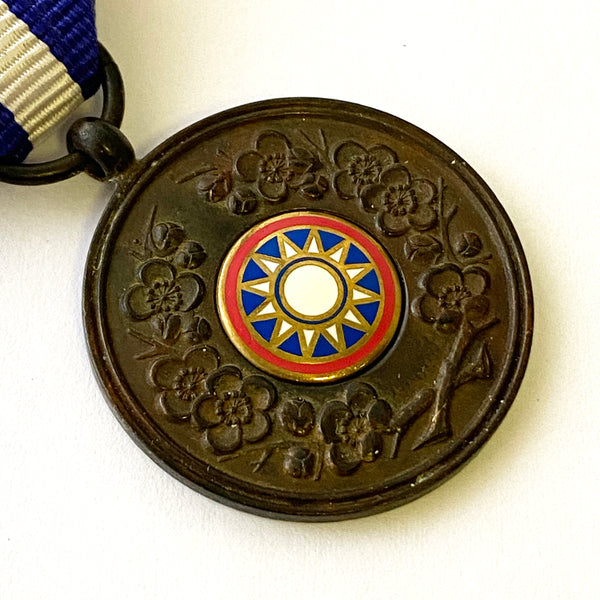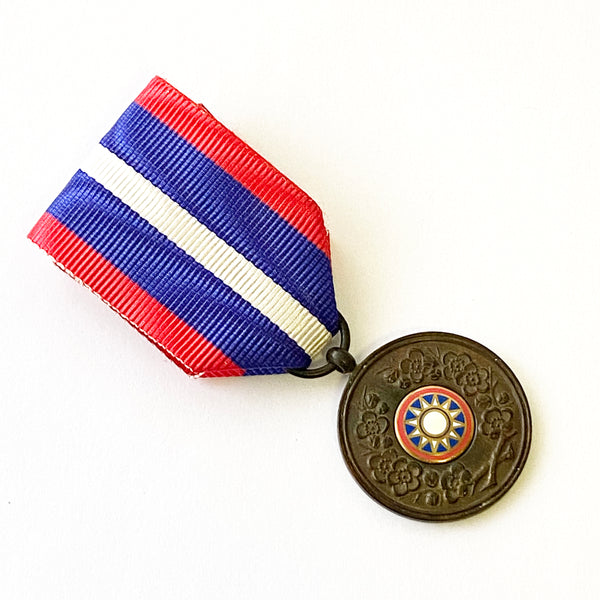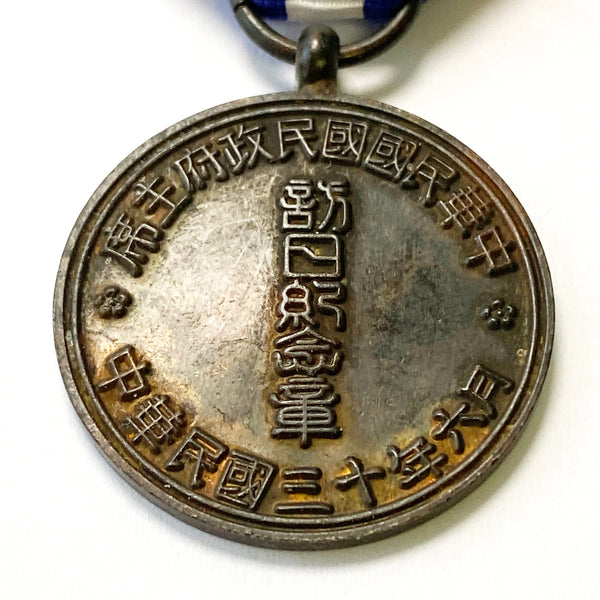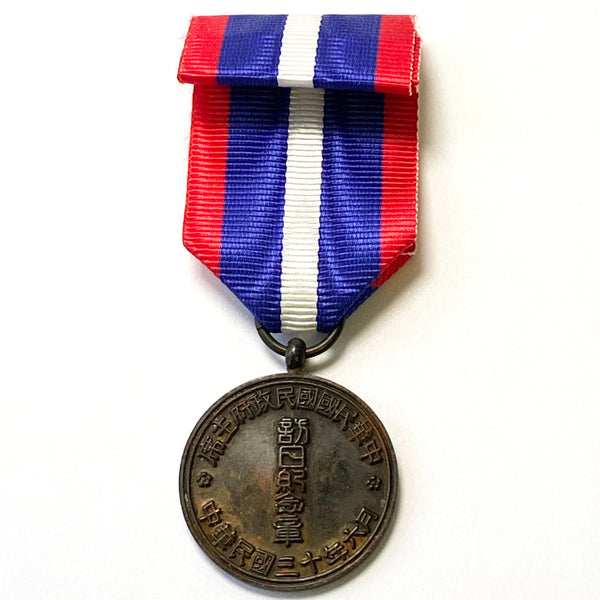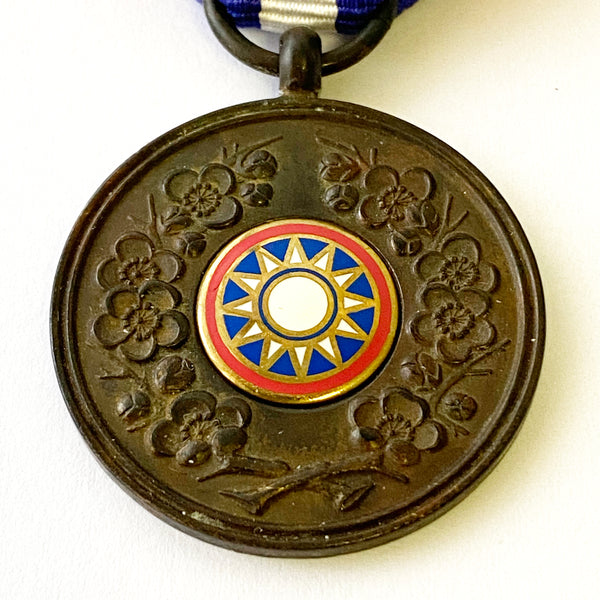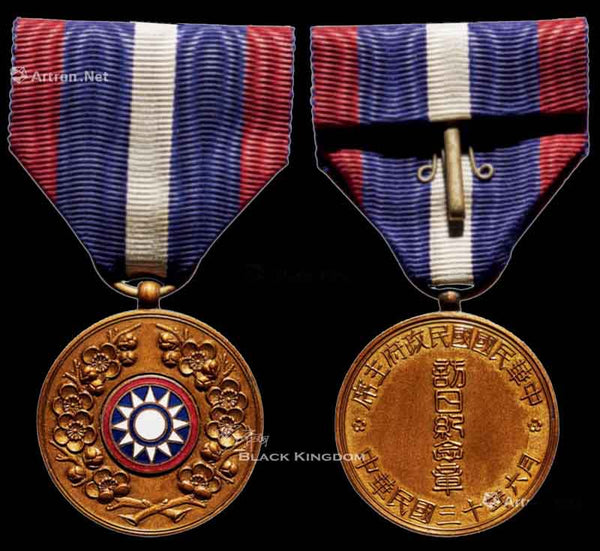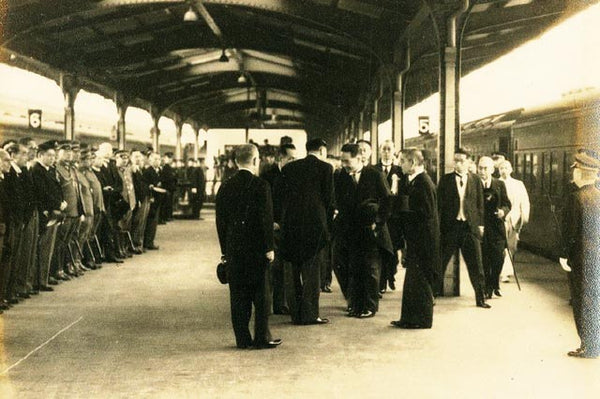China Republic Chinese medal "Visit Japan Commemorative Medal" 1941 Replica
China Republic Medal – Visit Japan Commemorative Medal 1941 Replica
Type: Museum Replica
Material: Brass with real hard enamel
Weight: ~15 g
Diameter: ~30.4 mm / 1.20 in
This is a faithful replica of the Visit Japan Commemorative Medal issued in 1941 by the Republic of China.
Front: National emblem of the Republic of China in a red circle, surrounded by plum blossom motifs.
Back: Inscription “訪日紀念章” (Visit Japan Commemorative Medal), “中華民國國民政府主席” (Chairman of the National Government of the Republic of China), and “中華民國三十年六月” (June 1941), separated by a plum blossom design.
Historical Background:
The original medal was issued to mark the diplomatic visit to Japan in June 1941. It was awarded to officials involved in the event and is a rare historical piece reflecting Sino-Japanese relations during that period.
⚠️ Note: This is a replica reproduction for collectors and educational display. It is not an original antique.













